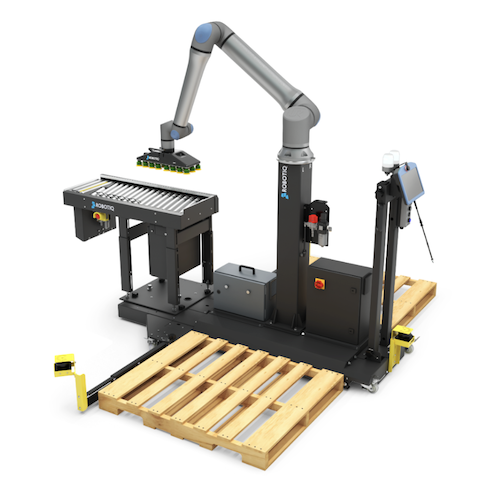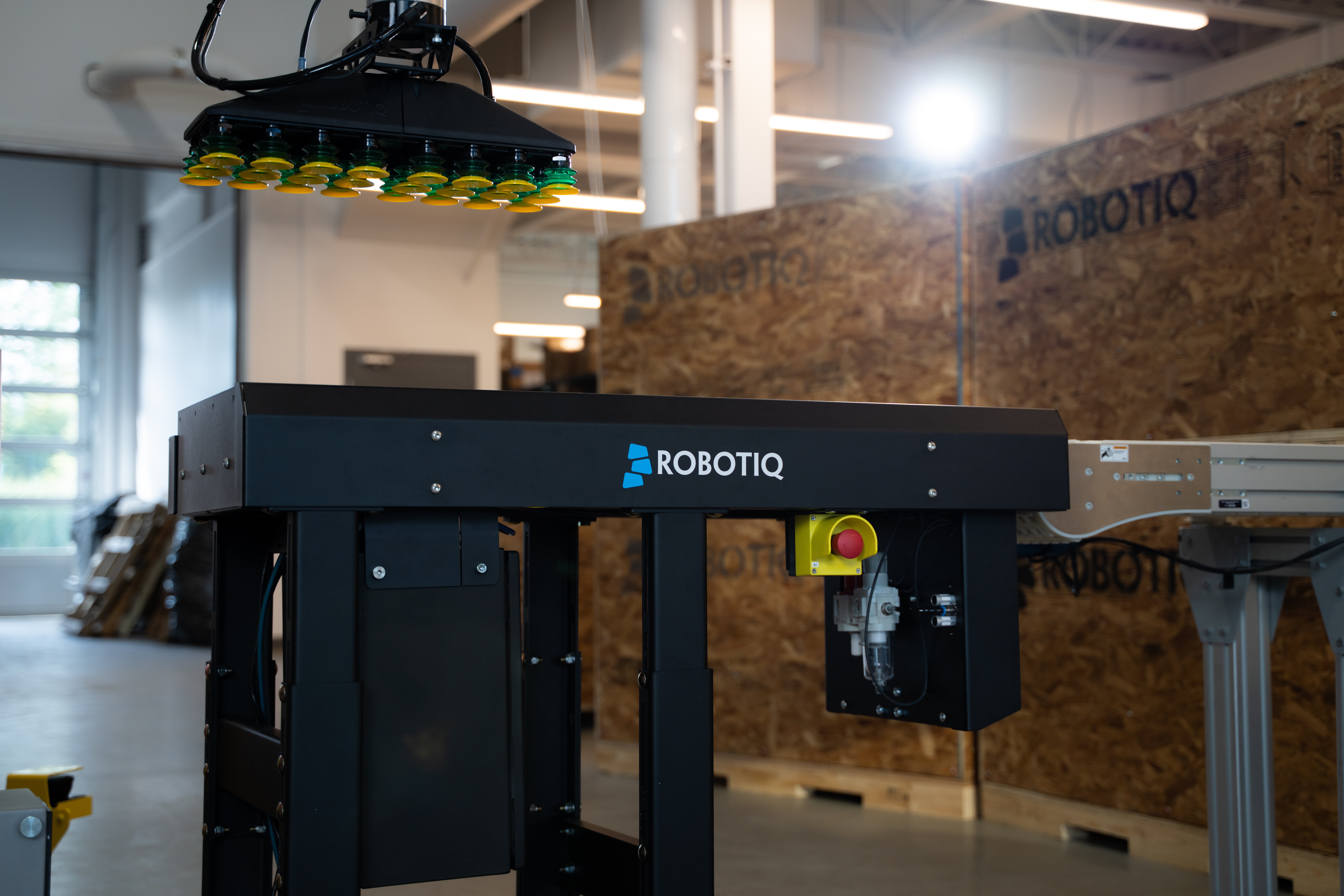Find your fit: Palletizing edition
-modified.png)
When it comes to palletizing automation, there’s no one-size-fits-all answer. Manufacturers have a range of options: from fully engineered centralized systems to cobot palletizers and plug-and-play solutions. The challenge is finding the one that matches your factory needs and ROI expectations.
This quick guide compares the most common palletizing solutions so you can make an informed decision and choose the right technology for your production floor.
1. Engineered centralized palletizers
Best for: Large facilities with very high-volume, standardized flows.
Centralized palletizers are the heavy hitters of automation. They offer the highest throughput, capable of handling 30–80 cases per minute, making them ideal for large facilities with multiple production lines feeding into one point.
These systems are robust and efficient but come with a significant investment — anywhere from $500,000 to over $2M — and require a large footprint, often 400–1000+ square feet. They also involve complex integration, conveyor infrastructure, and lengthy installation timelines. This solution is best for manufacturers who have high-volume, stable production and are prepared for a 4–7 year payback period.
2. Engineered end-of-line robotic palletizers
Best for: High-capacity lines that demand durability and reliability.
If you need high capacity but want to keep automation at the line level, engineered end-of-line robotic palletizers are a proven choice. They deliver strong throughput in the range of 25–60 cases per minute and are known for their durability and reliability.
Like centralized systems, these require a significant investment ($400K–$1.2M) and come with integration complexity and a large footprint. This option is perfect for facilities with consistent production runs that justify a robust, fixed installation designed for the long haul.
3. Engineered end-of-line cobot palletizers
Best for: Lower-throughput lines with frequent product changes or limited space.
For manufacturers with limited space or more frequent product changes, cobot palletizers provide a highly flexible alternative. These systems typically occupy just 100–200 square feet, come with built-in collaborative safety features, and can be redeployed quickly. Throughput ranges from 8–15 cases per minute, which is ideal for small- to mid-volume lines. While payload capacity is lower than that of large robots, cobot palletizers excel at providing a safe, adaptable solution that minimizes fencing requirements and operator risk.
Limitations of these three engineered solutions include long integration and lead times, the complexity that comes with customized solutions, vendor lock-in, and scope creep, any of which will slow down ROI.
4. “In-a-box” palletizers
Best for: Small, standardized operations that want plug-and-play simplicity.
“In-a-Box” palletizers are pre-engineered, compact solutions designed for fast installation and mobility. They are truly plug-and-play, letting manufacturers get up and running quickly without major layout changes. However, they offer limited customization, fixed pallet patterns, and moderate throughput (6–12 cases per minute).
5. Lean palletizing
Best for: Mid-volume operations with diverse product sizes and the need to grow over time.
A Lean Palletizer strikes a balance between flexibility and scalability. Combining collaborative hardware with intuitive software, this solution allows manufacturers to set up cells quickly, run multiple box formats, and scale to additional lines without starting from scratch.
It provides a predictable payback period of 1-2 years while giving operators an easy-to-use interface that doesn’t require extensive programming expertise. This is an ideal option for growing operations that need a repeatable, structured way to automate while maintaining the ability to adapt to future production changes.
6. Manual palletizing
Manual palletizing remains common in low-volume facilities, but it comes with significant downsides. Labor costs can reach $30K–$70K per operator per year, while repetitive lifting puts workers at risk for injuries and fatigue. Throughput is typically low — about 4–6 cases per minute — which can create bottlenecks at the end of the line.
Manual palletizing may make sense for very small or unpredictable production runs, but as volumes grow, the cost and risk often outweigh the flexibility it provides.
Key considerations for choosing a palletizing solution
When comparing palletizing systems, think about:
- Throughput: Cases per minute you need to hit
- Space: Floor footprint available for equipment
- Budget: CapEx vs. expected ROI/payback period
- Flexibility: Frequency of SKU changes and future growth plans
- Safety & Ergonomics: Operator interaction requirements
Take the first step
Choosing the right solution is easier when you have data. With the Robotiq Palletizing Fit Tool, you can:
✅ Validate your application in minutes
✅ Generate a custom 3D simulation of your palletizing cell
✅ Calculate ROI and payback period with your real data
✅ Get a downloadable report to share with your team
Start fast. Scale with confidence.
Fill out the Palletizing Fit Tool today and see if Lean Palletizing is right for your operation.







-2.jpg)

Leave a comment